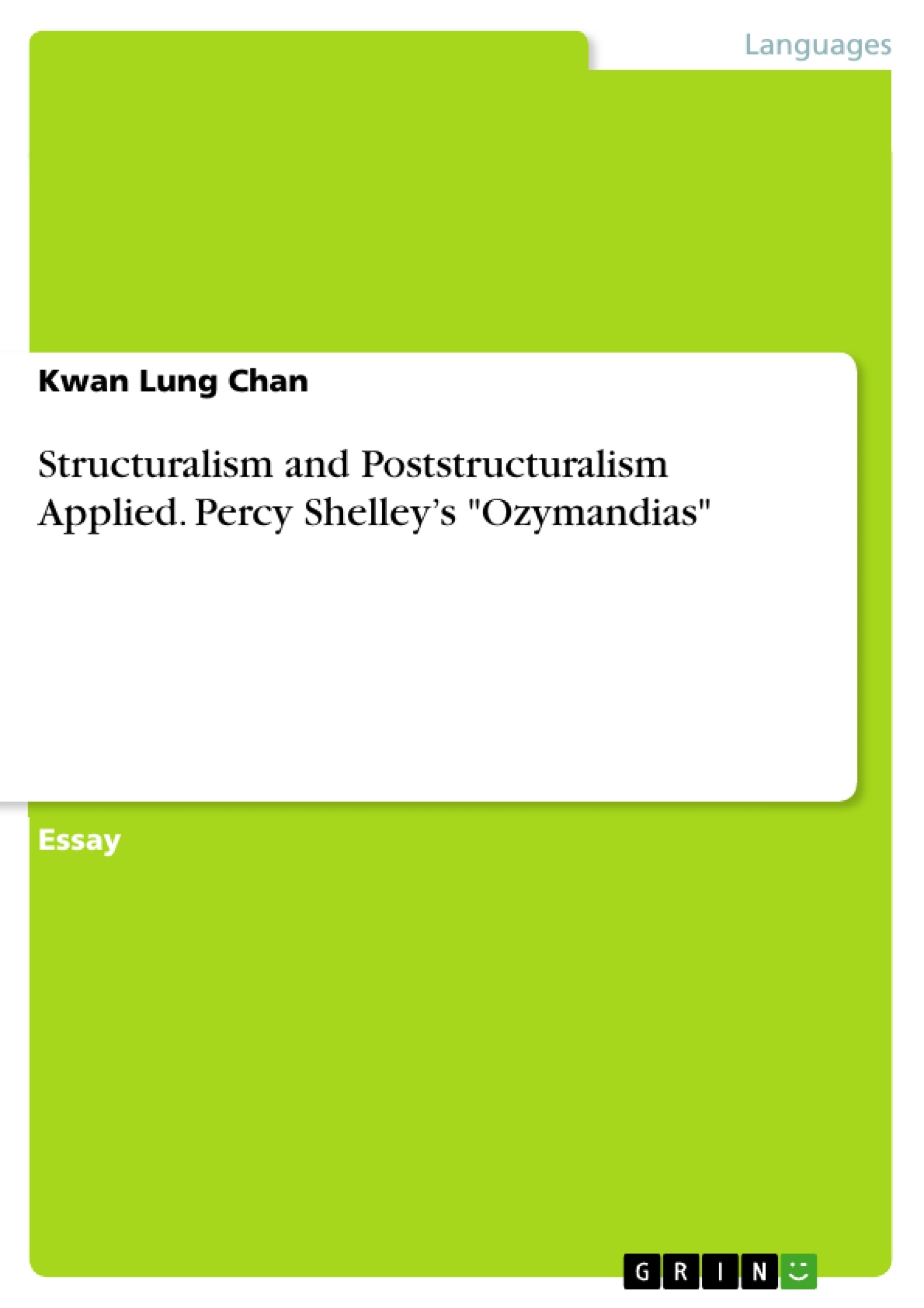In this essay, the author will first look at the background in which "Ozymandias" is set, and then will analyze the message of the story from the structuralist perspective through the details of the poet, and the history of the king Ozymandias.
Then he will look at the uncertainties of the speakers in the poem in the poststructuralist perspective, which expresses Shelley’s dissatisfaction of being only able to hear about the statue from the others.
According to Barry (2017), the structuralists use scientific methods to analyze a literary work. They look into the conventions of the genre, the history or different forms of art (including other literature) that the literary work refers to. On the other hand, the poststructuralists look into paradoxes and uncertainties as they think that signs’ meanings depend on the perceiver, and different people would have different perceptions.
Table of Contents
- Introduction
- Background of the poem
- Structuralist analysis of the poem
- Poststructuralist analysis of the poem
Objectives and Key Themes
This essay aims to analyze Percy Shelley's poem "Ozymandias" through the lens of structuralism and poststructuralism, highlighting the poem's underlying message about the transience of power and the limitations of human ambition.
- The historical context of the poem and the inspiration drawn from the statue of Ramesses II.
- The structuralist interpretation of the poem, examining the poet's political stance and the message about the futility of war and conquest.
- The poststructuralist analysis of the poem, focusing on the ambiguity of the speaker and the uncertainty surrounding the statue of Ozymandias.
- The exploration of Shelley's personal experiences and how they may have influenced the poem's themes.
- The use of literary devices such as irony and symbolism in conveying the poem's message.
Chapter Summaries
The introduction provides a brief overview of structuralism and poststructuralism and outlines the essay's approach to analyzing "Ozymandias."
The "Background of the poem" section delves into the historical context of the poem, discussing the discovery of the statue of Ramesses II and its potential influence on Shelley's inspiration.
The "Structuralist analysis of the poem" section examines the poem through the lens of structuralism, focusing on the poet's political stance and the message about the futility of war and conquest.
The "Poststructuralist analysis of the poem" section explores the poem's ambiguities, particularly the changing identity of the speaker and the uncertainties surrounding the statue of Ozymandias.
Keywords
The key terms and concepts explored in this essay include: structuralism, poststructuralism, Percy Shelley, Ozymandias, Ramesses II, British Empire, colonialism, power, ambition, transience, uncertainty, ambiguity, literary analysis, poetic devices.
- Quote paper
- Kwan Lung Chan (Author), 2019, Structuralism and Poststructuralism Applied. Percy Shelley’s "Ozymandias", Munich, GRIN Verlag, https://www.grin.com/document/934502



